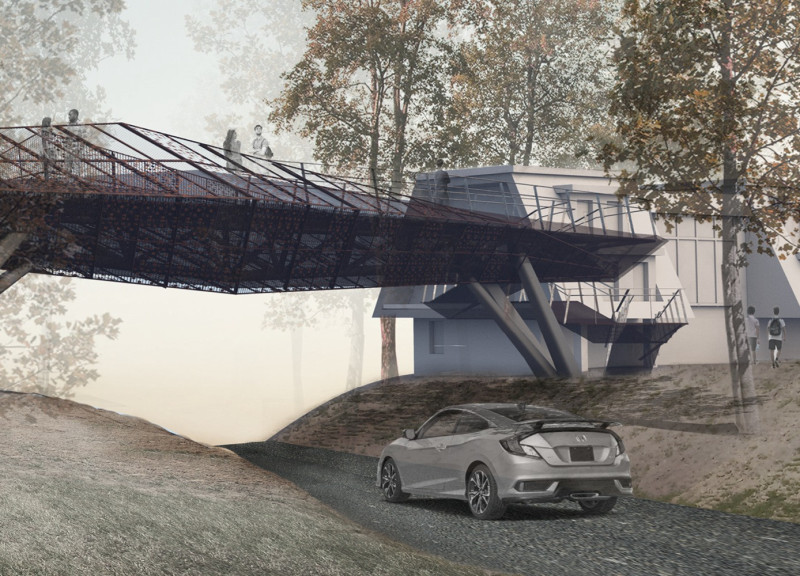5 key facts about this project
The bridge serves as a connection between people and the wilderness, highlighting the importance of coexistence in natural settings. Located in an area rich with ecological features, it allows for safe movement for both pedestrians and wildlife. The design focuses on transparency and visual compatibility with the landscape, ensuring that the structure complements rather than disrupts the environment.
Design Intent
The bridge integrates with its surroundings through thoughtful design choices. It minimizes visual impact while enabling users on the upper deck to traverse comfortably, and provides a safe passageway for animals below. The layout reflects a commitment to fostering harmony between human presence and ecological systems, promoting an environment where both can thrive.
Materiality
Corten steel is the primary material used for the construction of the bridge. This material is known for its strength and develops a unique weathered look over time. Its natural rust-like appearance helps the bridge blend with the landscape. Additionally, corten steel requires little maintenance, supporting sustainability goals and lowering long-term care costs.
Environmental Integration
The design aligns with principles commonly seen in National Parks, which emphasize respect for the natural environment. The bridge merges human infrastructure with habitat preservation, enabling interaction with nature without damaging the ecosystem. It encourages exploration while maintaining the integrity of the surroundings.
The bridge features transparent sections, offering clear views through and around it. This openness invites users to connect with the natural world, creating a presence that feels both approachable and integrated within its setting.


























